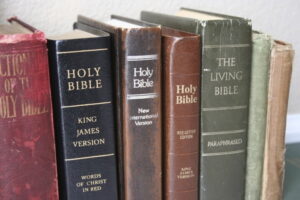No where in the world, throughout the history of the world, have you ever heard of anti-america-nism, anti-china-nism, anti-russia-nisim, anti-europe-nism, anti-africa-nism. Why is it that always throughout the history of this world there has been antisemitism, only a hatred toward the Jews? It’s not just political resistance against the Jews or religious hatred towards the Jews, Pockets of this deep-embedded hatred are found in different societies all around the world.
Who are the Jews? where did they come from? In this article, we will shine a light on why this hatred towards the Jews originates from and why it’s only towards Jews, but let’s first look at some antisemitism facts:
Antisemitism
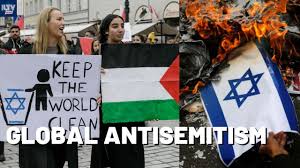 Antisemitism or Jew-hatred is hostility to, prejudice towards, or discrimination against, Jews. This sentiment is a form of racism, and a person who harbours it is called an antisemite. Primarily, antisemitic tendencies may be motivated by negative sentiment towards Jews as a people or by negative sentiment towards Jews with regard to Judaism. In the former case, usually presented as racial antisemitism, a person’s hostility is driven by the belief that Jews constitute a distinct race with inherent traits or characteristics that are repulsive or inferior to the preferred traits or characteristics within that person’s society.
Antisemitism or Jew-hatred is hostility to, prejudice towards, or discrimination against, Jews. This sentiment is a form of racism, and a person who harbours it is called an antisemite. Primarily, antisemitic tendencies may be motivated by negative sentiment towards Jews as a people or by negative sentiment towards Jews with regard to Judaism. In the former case, usually presented as racial antisemitism, a person’s hostility is driven by the belief that Jews constitute a distinct race with inherent traits or characteristics that are repulsive or inferior to the preferred traits or characteristics within that person’s society.
In the latter case, known as religious antisemitism, a person’s hostility is driven by their religion’s perception of Jews and Judaism, typically encompassing doctrines of supersession that expect or demand Jews to turn away from Judaism and submit to the religion presenting itself as Judaism’s successor faith—this is a common theme within the other Abrahamic religions. The development of racial and religious antisemitism has historically been encouraged by the concept of anti-Judaism, which is distinct from antisemitism itself.
Author(s): Wikipedia
History
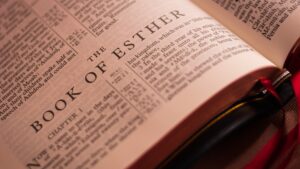 Only in one of the latest books of the Hebrew Bible, the book of Esther, do we find what we think of today as antisemitism. When Mordecai refuses to bow down to Haman (Esth. 3:2-6), he explains to his colleagues that he is a Jew, implying that his refusal was for Jewish reasons. His colleagues inform on him (Esth
Only in one of the latest books of the Hebrew Bible, the book of Esther, do we find what we think of today as antisemitism. When Mordecai refuses to bow down to Haman (Esth. 3:2-6), he explains to his colleagues that he is a Jew, implying that his refusal was for Jewish reasons. His colleagues inform on him (Esth
The Book of Esther in the Bible is considered to be a study of antisemitism and the first recorded instance of it in history. The story of Esther in the book is about how she used her position to stop the King’s advisor, Haman, from carrying out a plan to kill all the Jews in Persia.
Here are some things to learn from the Book of Esther about antisemitism:
Jewish unity: Esther understood that Jewish unity was the solution to antisemitism. She told Mordechai to assemble all the Jews, which brought them together and helped them overcome their disunity.
Celebrating victory: The book ends with the Jewish people celebrating their victory over their enemies. Some say this is an example of satire or fantasy, and that the reader is ironically being pointed at for celebrating the violence they feared from the enemy.
The Purim holiday: The Purim holiday is based on the events in the Book of Esther. The tradition of Mishloach Manot, where people send gifts of food to each other, is a way to increase love and friendship, and to teach the importance of working together.
Author(s): Bible
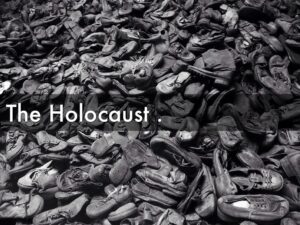 In the context of the economic depression of the 1930s, the Nazi Party gained popularity in part by presenting “Jews” as the source for a variety of political, social, economic, and ethical problems facing the German people. The Nazis used racist and also older social, economic, and religious imagery to this end. After seizing power, they continued to used the same means to gain legitimacy.
In the context of the economic depression of the 1930s, the Nazi Party gained popularity in part by presenting “Jews” as the source for a variety of political, social, economic, and ethical problems facing the German people. The Nazis used racist and also older social, economic, and religious imagery to this end. After seizing power, they continued to used the same means to gain legitimacy.
Inspired by Adolf Hitler’s theories of racial struggle and the “intent” of the Jews to survive and expand at the expense of Germans, the Nazis, as a governing party from 1933-1938, ordered anti-Jewish boycotts, staged book burnings, and enacted anti-Jewish legislation. In 1935, the Nuremberg Laws defined Jews by race and mandated the total separation of “Aryans” and “non-Aryans.” On November 9, 1938, the Nazis destroyed synagogues and the shop windows of Jewish-owned stores throughout Germany and Austria (Kristallnacht). These measures aimed at both legal and social segregation of Jews from Germans and Austrians.
Kristallnacht, the initiation of World War II in 1939, and the invasion of the Soviet Union in 1941 marked the transition to the era of destruction, in which genocide would become the key focus of Nazi antisemitism. To justify the murder of the Jews both to the perpetrators and to bystanders in Germany and Europe, the Nazis used not only racist arguments but also arguments derived from older negative stereotypes, including Jews as communist subversives, as war profiteers and hoarders, and as a danger to internal security because of their inherent disloyalty and opposition to Germany.
Author(s): United States Holocaust Memorial Museum, Washington, DC
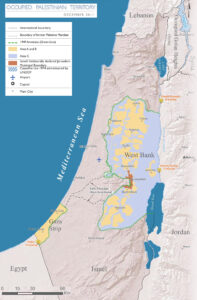 “From the river to the sea” (Arabic: من النهر إلى البحر, romanized: min an-nahr ʾilā l-baḥr; Palestinian Arabic: من المية للمية, romanized: min il-ṃayye la-l-ṃayye, lit. ’from the water to the water’) is a political phrase that refers geographically to the area between the Jordan River and the Mediterranean Sea, an area historically called Palestine, which today includes Israel and the Palestinian territories of the occupied West Bank and the blockaded Gaza Strip. The phrase and similar phrases have been used both by Palestinian and Israeli politicians to mean that the area should consist of one state.
“From the river to the sea” (Arabic: من النهر إلى البحر, romanized: min an-nahr ʾilā l-baḥr; Palestinian Arabic: من المية للمية, romanized: min il-ṃayye la-l-ṃayye, lit. ’from the water to the water’) is a political phrase that refers geographically to the area between the Jordan River and the Mediterranean Sea, an area historically called Palestine, which today includes Israel and the Palestinian territories of the occupied West Bank and the blockaded Gaza Strip. The phrase and similar phrases have been used both by Palestinian and Israeli politicians to mean that the area should consist of one state.
In the 1960s, the Palestine Liberation Organization (PLO) used it to call for what they saw as a “decolonized” state encompassing the entirety of Mandatory Palestine. By 1969, after several revisions, the PLO used the phrase to call for a single democratic state for Arabs and Jews, that would replace Israel.
Many pro-Palestinian activists consider it “a call for peace and equality” after decades of military rule over Palestinians, while for many Jews it is seen as a call for the destruction of Israel. Hamas used the phrase in its 2017 charter. Usage of the phrase by such Palestinian militant groups has led critics to say that it advocates for the dismantling of Israel, and the removal or extermination of its Jewish population. Some countries have considered criminalizing its use as an antisemitic call for violence.
An early Zionist slogan envisaged statehood extending over the two banks of the Jordan river, and when that vision proved impractical, it was substituted by the idea of a Greater Israel, an entity conceived as extending from the Jordan to the sea. The Palestinian phrase has also been used by Israeli politicians. The 1977 election manifesto of the right-wing Israeli Likud party said: “Between the sea and the Jordan there will only be Israeli sovereignty.” Similar wording, such as referring to the area “west of the Jordan river”, has also been used more recently by other Israeli politicians, including Israeli prime minister Benjamin Netanyahu on 18 January 2024.
Author(s): Wikipedia

UNRWA – UN
The education of Palestinian school children in refugee camps all over the Middle East has been provided for 70 years by the United Nations Relief and Works Agency (UNRWA). The current materials used to educate over half a million Palestinian children are a major obstacle to peace between Israel and the Palestinians. It is also true that the latest editions of these books take an even more intractable position. For example, in the older (pre-2017) books Israel was vilified by name. Now, in the new books, there is no mention of the word Israel and it does not appear on any map nor does any city built by the Jews.
 Their curriculum must change drastically if there is ever to be a lasting negotiated peace between Israelis and Palestinians. Why? Because these schools have been inciting three generations of young Palestinians to hate and kill Jews, to revere martyrs, and aspire to jihad. Parents of current students have been educated in the same schools, as have many of the 30,000 teachers employed by UNRWA. Perhaps most importantly, the education curriculum teaches that the so-called Palestinian Right of Return is to be achieved by war.
Their curriculum must change drastically if there is ever to be a lasting negotiated peace between Israelis and Palestinians. Why? Because these schools have been inciting three generations of young Palestinians to hate and kill Jews, to revere martyrs, and aspire to jihad. Parents of current students have been educated in the same schools, as have many of the 30,000 teachers employed by UNRWA. Perhaps most importantly, the education curriculum teaches that the so-called Palestinian Right of Return is to be achieved by war.
Author(s): International Council of Jewish women



